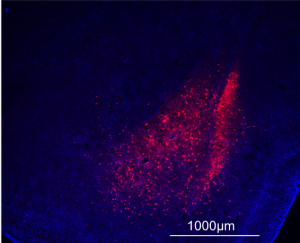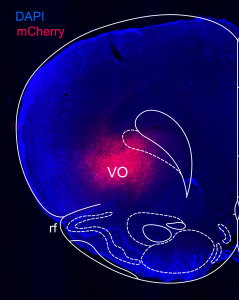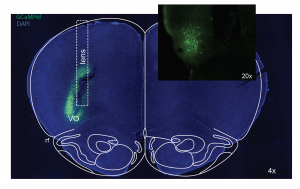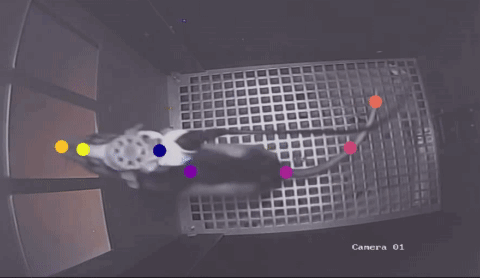 We use a combination of classic neuroscience methods for perturbing brain activity (transient pharmacological inhibition and excitotoxic lesions) along with newer tools for bidrectional cell-specific circuit manipulation, or chemogenetics and optogenetics. We have used both inhibitory and excitatory Designer Receptors Exclusively Activated by Designer Drugs (DREADDs) with success (validated in vivo and in slice). We also employ intravenous drug and alcohol self-administration models, in vivo single-cell calcium imaging and in vivo electrophysiology. We assess regional changes in protein and gene expression via immunohistochemistry, ELISAs, and RT-qPCR. Less often we employ noncontingent drug dosing regimens and work with radioisotopes for receptor binding studies and microPET.
We use a combination of classic neuroscience methods for perturbing brain activity (transient pharmacological inhibition and excitotoxic lesions) along with newer tools for bidrectional cell-specific circuit manipulation, or chemogenetics and optogenetics. We have used both inhibitory and excitatory Designer Receptors Exclusively Activated by Designer Drugs (DREADDs) with success (validated in vivo and in slice). We also employ intravenous drug and alcohol self-administration models, in vivo single-cell calcium imaging and in vivo electrophysiology. We assess regional changes in protein and gene expression via immunohistochemistry, ELISAs, and RT-qPCR. Less often we employ noncontingent drug dosing regimens and work with radioisotopes for receptor binding studies and microPET.

We partner the techniques described above with a variety of custom-designed behavioral paradigms, computational modeling and Generalized Linear Models (GLMs) to better understand the effects of our brain manipulations.
